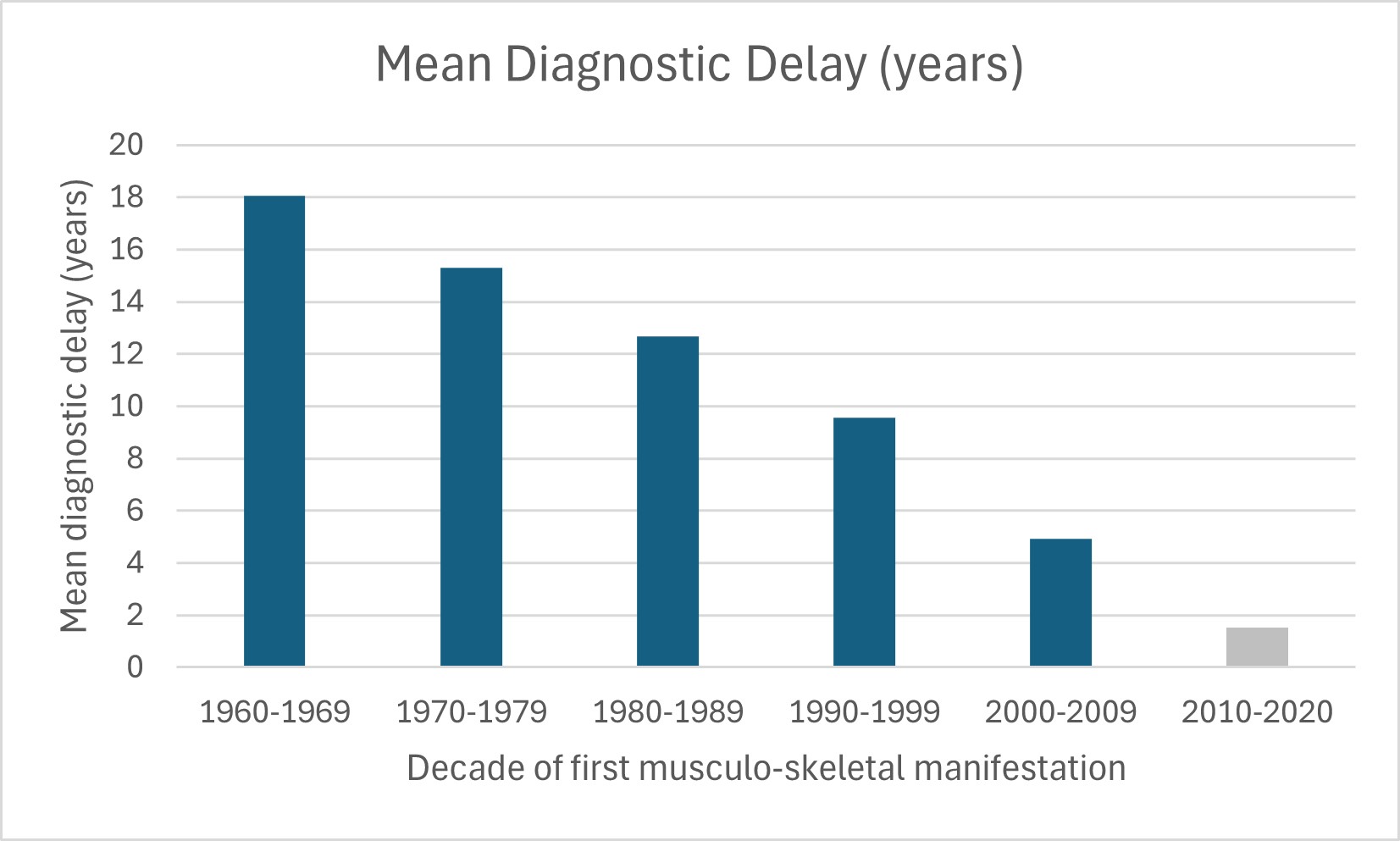Session Information
Date: Saturday, November 16, 2024
Title: SpA Including PsA – Diagnosis, Manifestations, & Outcomes Poster I
Session Type: Poster Session A
Session Time: 10:30AM-12:30PM
Background/Purpose: Although diagnostic tools and management of spondyloarthritis (SpA) have recently improved, data on their impact on diagnostic delay (DD) are still conflicting. In this ancillary analysis from the international ASAS-PerSpA study, we aimed to estimate the change in DD over time, stratified by world region and country socio-economic development level.
Methods: The ASAS-PerSpA study included patients diagnosed by their rheumatologists with any SpA entity cross-sectionally in 2020. The DD was defined by the time lag between the first musculoskeletal manifestation (MM: axial or peripheral) and the date of SpA diagnosis. The mean diagnostic delay was compared across decades of onset of the first MM, from 1960 until 2009, excluding the last decade to account for potentially yet undiagnosed patients. Data was presented descriptively -by decade of the first MM- for the whole cohort, by world region, and by country Human Development Index (HDI). Correlation between the diagnostic delay and the date of the first MM was conducted using the Mann-Kendall statistical test for trend, by SpA entity, world region, and HDI.
Results: The analysis included 4,339 patients with SpA (2622 patients with axSpA, 1016 with PsA, 424 with pSpA, 110 with IBD-SpA, and 167 others), with a mean age of 44.4 years (±13.9) and 60.9% females. Regarding the world region, 38% were from Europe and North America, 28% from the Middle East and North Africa (MENA), 22% from Asia, and 12% from Latin America. As for the HDI category, 42% were from very high HDI, 35% from high HDI, and 23% from medium HDI countries (none were from low HDI countries).
In the whole cohort, the mean DD was 4.5 years (±7.0) and was associated with the world region (shorter DD in Asia) and the HDI (shorter DD with higher HDI) (Figure 1).
Over time, DD decreased in the whole population, i.e., patients having their first MM in the 1960s had significantly longer DD compared to patients having it in the 2000s (Kendall tau -0.350, p< 0.001) (Figure 2). The same trend was observed across the main SpA entities, the 4 world regions, and the HDI categories (p-value < 0.001 for all time trends) (Figure 3).
Conclusion: Based on the cross-sectional data from the ASAS-PerSpA study, the DD in SpA seems to decrease over time, regardless of the world region, country’s HDI, and SpA entities. These results should be confirmed in dedicated studies conducted on prospective cohorts.
To cite this abstract in AMA style:
Ziade N, Hmamouchi I, López Medina C, Aoun M, Gamal S, Dougados M, Elzorkany B. Is the Diagnostic Delay Getting Shorter with Time for Patients with Spondyloarthritis? Data from the International ASAS-PerSpA Study [abstract]. Arthritis Rheumatol. 2024; 76 (suppl 9). https://acrabstracts.org/abstract/is-the-diagnostic-delay-getting-shorter-with-time-for-patients-with-spondyloarthritis-data-from-the-international-asas-perspa-study/. Accessed .« Back to ACR Convergence 2024
ACR Meeting Abstracts - https://acrabstracts.org/abstract/is-the-diagnostic-delay-getting-shorter-with-time-for-patients-with-spondyloarthritis-data-from-the-international-asas-perspa-study/



